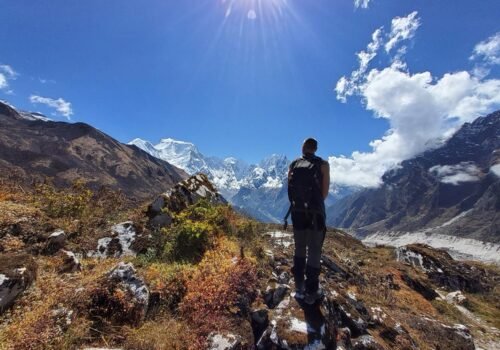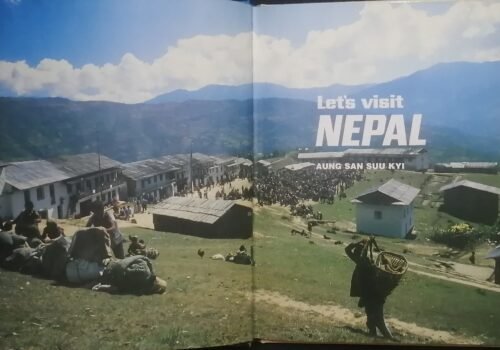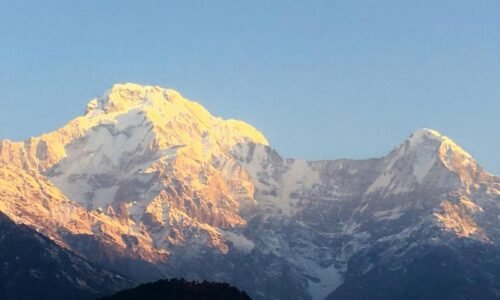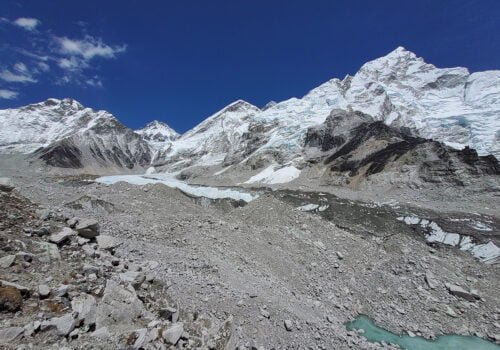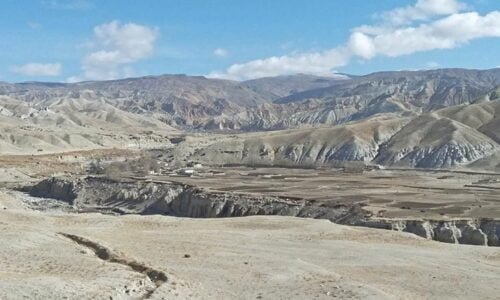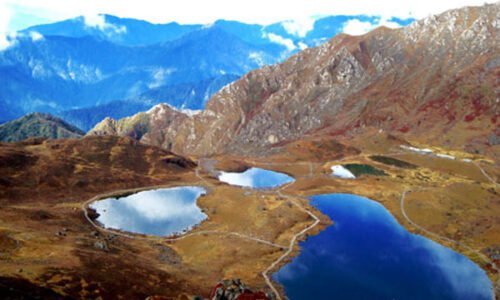Annapurna Short Treks
3 Jan 2023 9 min to read
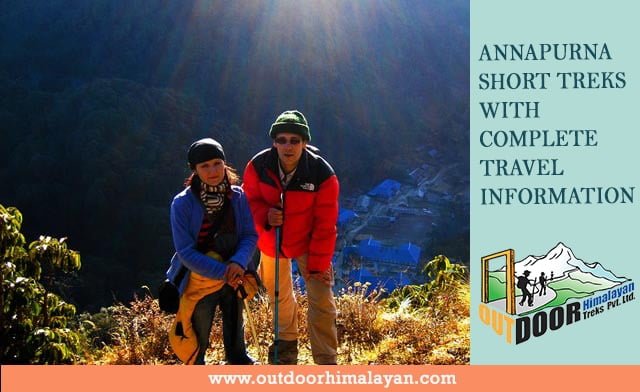
Annapurna Short Treks are a great way to experience the natural beauty of the Annapurna Region of Nepal. There are short treks variety in the Annapurna region, ranging from easy half-day walks to multi-day treks that take about 5/6 hours a day. Outdoor Himalayan Treks offers you phenomenal Annapurna short treks with complete travel information.
Some popular short treks in the Annapurna region include the Annapurna Base Camp Trek, Ghorepani Poon Hill Trek, the Mardi Himal Trek, the Sarangkot Dhampus Trek, Sikles Trek, and the Royal Trek. These treks typically take 3 to 7 days to complete. It offers superb views of the Annapurna mountain range, as well as the opportunity to experience the local culture and traditions of the Gurung and Magar natives.
Annapurna Base Camp Trek
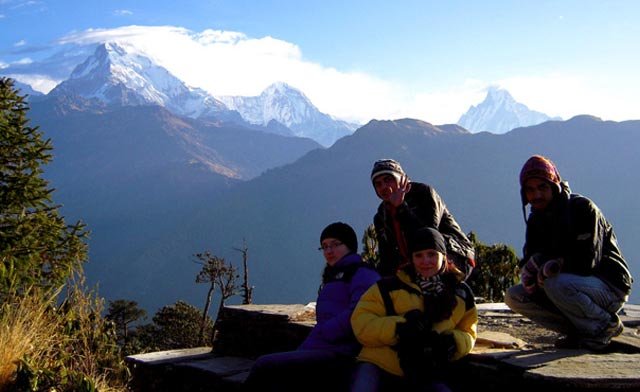
The Annapurna Base Camp Trek is a popular classic trek in the Annapurna region. It is a moderate trek that takes you to the base camp of Annapurna South at an elevation of 4,130 meters. The trek offers fabulous and close-up views of the Annapurna, Machhapuchhre, Hiunchuli, and other surrounding peaks. Admire the beautiful villages, rhododendron forests, and terraced fields en route.
Ghorepani Poon Hill Trek
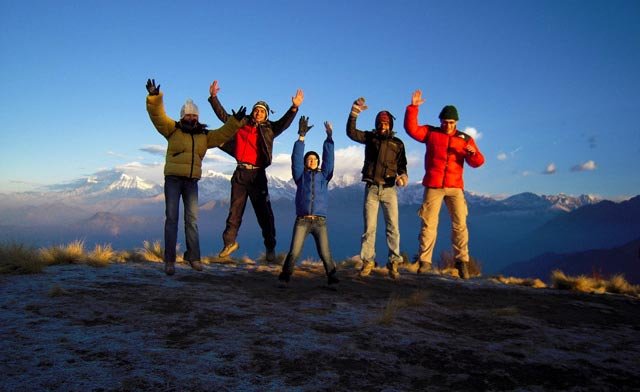
The Ghorepani Poon Hill Trek is a short and easy trek in the vicinity of the Annapurna region. The sunrise from the Poon Hill viewpoint over the panoramic snow-capped Annapurna mountain ranges is wonderful. Get superb views of Annapurna South, Annapurna I, Hiunchuli, and Fishtail. Trek through the beautiful Magar village Ghorepani walking past the blossoming rhododendron forests. Also, experience the culture and traditions of the local people. It is undoubtedly one of the best Annapurna short treks.
Sarangkot Dhampus Trek
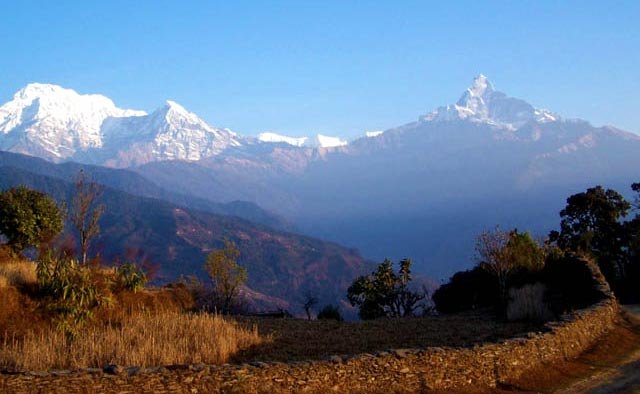
The Sarangkot Dhampus Trek relatively shortest trek in the Annapurna region. The sunrise and sunset view from Sarangkot is not to be missed. A bird-eye view of Pokhara valley, Fewa Lake adds beauty to this trek. The close-up view of Mt. Machhapuchhre is exceptional. Dhampus is a popular Gurung village where one gets impressed with the hospitality of the locals. An old village with its own culture and lifestyle is something new trekkers can experience. Enjoy the awesome views of Annapurna and Dhaulagiri ranges from here.
Mardi Himal Trek
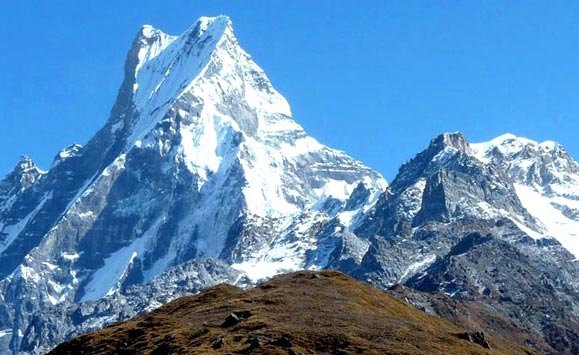
One of the lovely Himal in the Annapurna region is Mardi Himal. The best alternative short trek option for the trekkers. The less-visited trail offers fantastic views of Annapurna, Machhapuchhre, and Mardi during the trek. Walk through the beautiful forested trail enjoying the surrounding natural scenery.
Sikles Trek
Sikles is a traditional Gurung village where its ancient culture and tradition are strongly preserved. The village with its natural beauty attracts many trekkers. Adore the numerous mountain views such as Annapurna, Dhaulagiri, Dhampus Peak, Tukuche Peak, and many more.

Royal Trek
The trek is absolutely Royal in nature as it takes the trekkers to the surroundings of beautiful nature which includes greenery, mountains, and lakes. The main highlight of this trek is that within the lower elevations, trekkers can cherish the amazing views of snow-capped mountains such as Manaslu, Dhaulagiri, Machhapuchhre, and Annapurna.
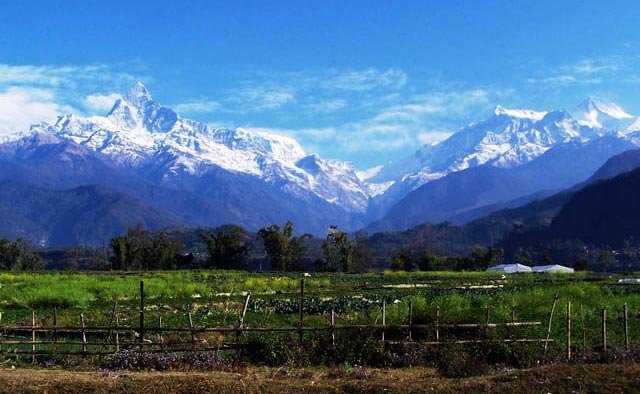
Travel Info
Accommodation
Accommodations in the Annapurna region range from basic but comfortable locally-owned guesthouses to more luxurious lodges. Many trekking routes have several guesthouses and lodges along the way, but it’s a good idea to book ahead, especially during peak season. One must pay the extra cost for the use of Wi-Fi, electricity, laundry, and hot water.
Food and water
Dal-Bhat is the chief dish during the Annapurna region’s short trek. Besides Dal-Bhat, there are plenty of options like noodles, soup, bread, eggs, and hot drinks. Drinking water is easily available everywhere. One can purchase bottled water or fill water from taps or boiled water paying extra from teahouses. It’s always a good idea to bring a water filter or purification tablets to ensure that you have a reliable source of safe drinking water.
Communication
In the Annapurna region, the internet connectivity and phone network are stable in the lower regions. Since this is the short Annapurna region trek, in most of the parts there is fair internet connectivity and phone signals. To use the internet, one can purchase a local Sim card with a data pack.
Transport
The Annapurna region is just a few kilometers far from the capital Kathmandu. Hence, the best and quickest means of transport in the Annapurna region is to take flight. Riding a vehicle or taking roadways is the second best option. It takes about 6/7 hours to reach the tourist capital Pokhara depending on the road traffic. Pokhara is the starting point for most of the treks in the Annapurna region.
Annapurna Region Trek Types & Trek Routes
Annapurna Base Camp Trek
Phedi-Tolka-Sinuwa-Deurali-Annapurna Base Camp (ABC)-Dovan-Bamboo-Ghandruk
Ghorepani Poon Hill Trek
Hile-Ulleri-Ghorepani-Poon Hill-Tadapani-Ghandruk
Sarangkot Dhampus Trek
Pokhara-Sarangkot-Australian Camp-Dhampus-Phedi
Mardi Himal Trek
Phedi-Deurali-Forest Camp-Low Camp-High Camp-Siding
Sikles Trek
Bijayapur Khola-Kalikasthan-Lama Khet-Sikles-Nyauli Kharka-Ghale Gaun-Hemja
Royal Trek
Bijayapur Khola-Kalikasthan-Syanglung-Chisopani-Begnas Tal
Travel Insurance
If you’re planning a trip to the Annapurna region of Nepal, it’s a good idea to purchase travel insurance to protect yourself against unexpected events or emergencies that may occur during your trip.
When looking for travel insurance for the Annapurna region, it’s important to find a policy that covers high-altitude trekking. Specifically, look for a policy that does cover all essential activities. Consider the following things while purchasing travel insurance for the Annapurna region:
- Coverage for medical emergencies
- Coverage for trip cancellations or interruptions due to an unforeseen event
- Coverage for lost or stolen belongings
- Coverage for high-altitude trekking
- Coverage for emergency evacuations
Best time to visit
For the Annapurna region’s short treks, all seasons are favorable to visit. All seasons provide unique scenery and witness the beauty of this region in its original form. But, many consider Spring (March to May), and Autumn (September to November) as the best seasons. It is because the skies are clear, the weather is bright during the day, and trails are comfortable to trek. For the off-season treks i.e. in winter and rainy, it is advisable to plan carefully as the trails are slippery, muddy, and snowy as well as the weather is unpredictable.
How to get there?
The Annapurna region can be accessed from Kathmandu, the capital of Nepal, by taking a tourist bus ride or booking a private cab. For easy access, take a short scenic flight from Kathmandu to Pokhara. From there, you can follow several different trekking routes through the region.
Required Permits & its Cost
The compulsory permits for the Annapurna region short treks except Sarangkot Dhampus trek are:
Annapurna Conservation Area Permit (ACAP)
- Foreigners- NPR 3000/person
- SAARC- NPR 1000/person
Trekkers Information Management System (TIMS)
- Foreigners- NPR 2000/person
- SAARC- NPR 1000/person
- Diplomats/Foreign Officials & their families- NPR 500/person
How long does it take to issue the permit?
It only takes a few hours to issue the permit. Trekkers must submit all the required documents to the travel agency.
Where to issue the permit?
For the Annapurna region treks, we require Annapurna Conservation Area Permit (ACAP) and a Trekkers Information Management System (TIMS) Permit. One can issue ACAP and TIMS permits either from Tourist Service Centre, Exhibition Road, Kathmandu, or Nepal Tourism Board Service Centre, Pokhara in the Annapurna region. Since all permits are taken care of by the travel agency, trekkers needn’t worry much.
Just submit the following documents to the travel agency to issue the permits.
- Passport photocopy with 6 months validity
- 4 Passport size photos
- Nepali Visa with the arrival stamp
- Travel Insurance papers (all essential things must cover)
- Flight tickets photocopy
- Agreement Letter to trekking company and Immigration Head
Annapurna Region Short Trek Difficulty
Annapurna region’s short treks are generally in the lower regions. Hence, the treks are easy to medium-level difficult. For new trekkers, it may be slightly tough due to the steep ascend and descent, and roughness of the trails. As the elevation rises, trekkers might find it difficult. But, with proper guidance the short Annapurna treks are attainable.
Trekkers need to be physically and mentally fit. So, the best advice is to participate in short hikes at high altitudes before starting the trek. Take necessary health check-ups and eat a healthy diet. Do some physical training exercises and yoga or meditation for sound mental health. Having said this all, our support is always there throughout your journey from the start to the end.
Porter Luggage limitation
The luggage limitation is a maximum of 15 kg per trekker. One porter carries the luggage of two trekkers. The luggage limitation is planned considering the health of the porters.
Altitude Sickness & its Symptoms
Altitude sickness, also known as acute mountain sickness (AMS), is a common condition that can occur when you travel to high altitudes, typically above 2,400 meters (8,000 feet). It is caused by reduced air pressure and lowered oxygen levels at high altitudes, which can affect the way your body functions. In the Annapurna region, altitude sickness is natural.
Symptoms of altitude sickness can vary from person to person, but common symptoms include:
- Headache
- Dizziness or lightheadedness
- Fatigue or weakness
- Shortness of breath or difficulty breathing
- Loss of appetite or nausea
- Insomnia or difficulty sleeping
- Swelling of the hands, feet, and face
Preventive Guidelines
There are several preventive guidelines one can follow to reduce the risk of developing altitude sickness when trekking in the Annapurna region:
- Acclimatize gradually for adjusting to the surroundings
- Stretch the body and do some warm-ups before the trek
- Ascend slowly to give the body time to acclimatize
- Drink plenty of fluids to prevent Dehydration and urinate frequently to help the body function properly
- Avoid alcohol and caffeine, and salty foods
- Avoid strenuous activity
- Get plenty of rest to allow the body time to recover and adjust to the lower oxygen levels
- Make sure to get plenty of sleep and take regular breaks to rest
- Use an oxygen cylinder if necessary in case of difficulty
- Immediately consult with a guide and seek medical attention if necessary
Equipment checklist
Essential Documents: Passport, Travel Permits, Visa Photocopy, Passport size photos
Food: Light snacks, Energy bars, and drink mix
Shoes: Camp shoes, Pair of hiking boots, Rubber sandals
Clothes: Windcheater jacket, Thermals, Insulating Down Jacket, Fleece, Long sleeve shirts, Gloves, Towels, Inner garments, Trekking pants, Trousers, Shorts, Socks, Raincoat, Balaclava, Bandana, Gaiters
Accessories: Sunglasses, Hats/Caps, Sunscreen, Lip Balm, Water bottles, Pocket Knife, Solar chargers, Batteries, Head Lamps, Torch, Umbrella, Sewing kit, Water Purifying solution kits, reusable bags to deposit waste, separate clean/dirty clothes
Equipment: Warm Sleeping bag, Map, Trekking poles, Duffel bag
Note: Customize the above-mentioned checklist as necessary. Buy or rent option is also there in Kathmandu.
